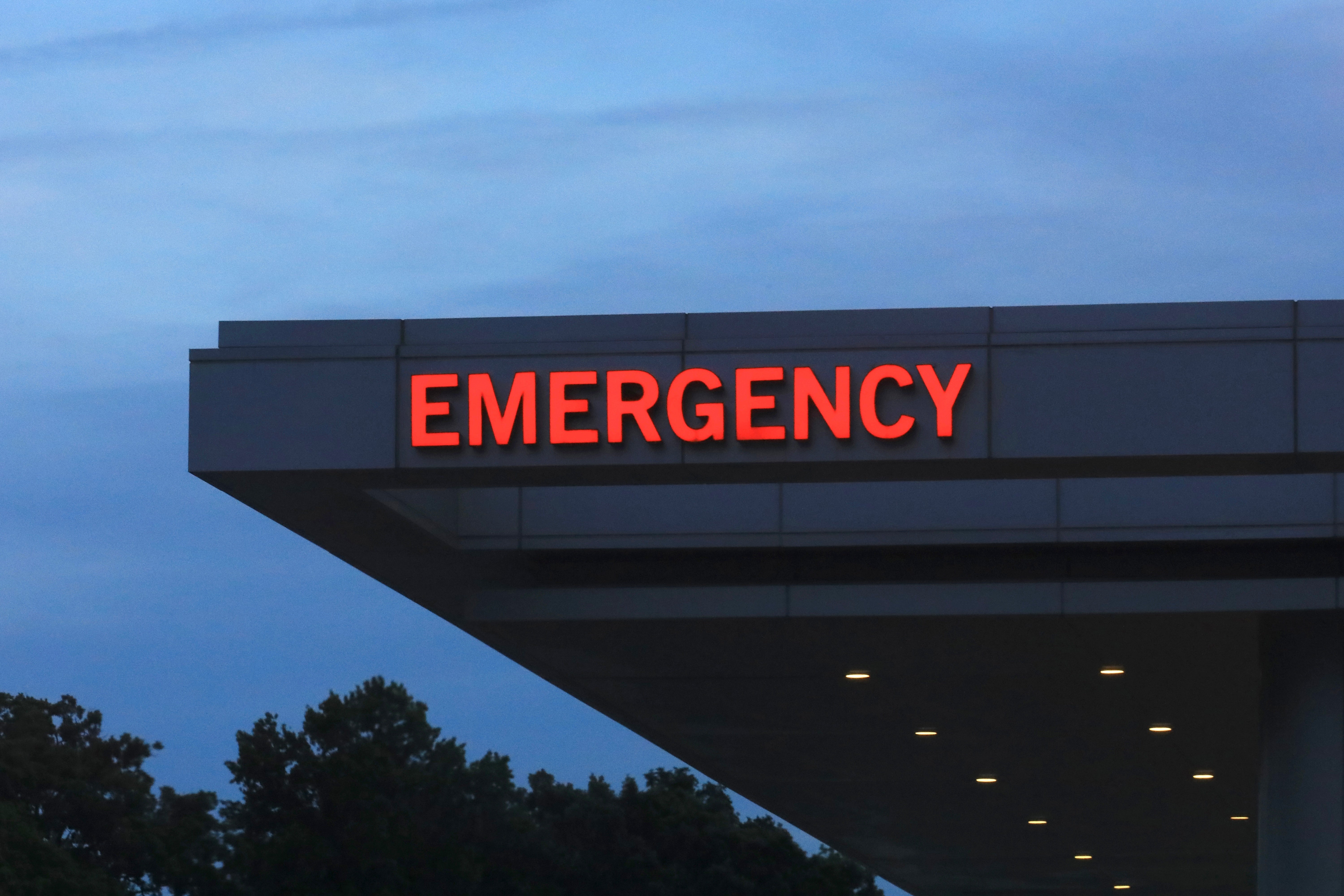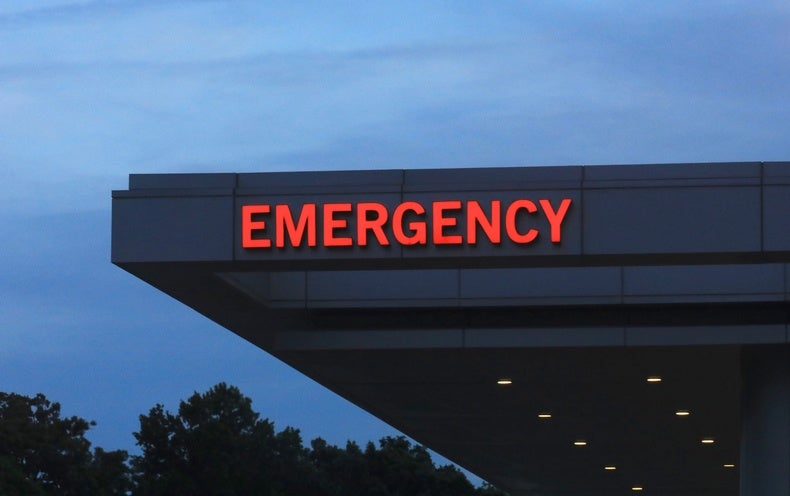
Picture yourself in the emergency department in desperate need of acute care.
If you are lucky, you quickly check in with a triage nurse who takes your vitals and registers your complaint—before sending you back to the lobby. Hours pass and it’s likely you still have not been treated. You are surrounded by other sick people, some with contagious diseases. As the clock ticks, many people leave, taking a risk to manage their illness on their own. Finally, someone takes you to the treatment area, but it’s only to wait again surrounded by what seems to be utter chaos before eventually, sometimes hours later, a harried doctor comes to see you.
Now picture yourself on the other side. You are an emergency physician, nurse or one of the countless other providers who contribute to this critical care. You want desperately to see the patient who has been waiting for hours, but the department is short staffed because of widespread nursing shortages, projected to create 450,000 open positions by 2025. Your ED is full of people “boarding”, or who need to be admitted to the hospital but are stuck – there are not enough beds available to transfer that person out of the emergency department. This leaves less space to see or treat the now growing line of people in the waiting room.
People lash out at you out of frustration over their long waits. Your department is gridlocked because you can’t move people out or to get things done because there are not enough people. You feel powerless, exhausted and even grief-stricken.
By now, thanks to COVID, many people are aware of the challenges of working in an emergency department. But many of these problems existed before the pandemic, and it looks like things are getting worse. A few days ago, on the largest Match Day in history, when about 40,000 medical students all over the country learned where they would do their next years of training after an often ultra-competitive process for a limited number of spots, hundreds of emergency medicine residency positions went unfilled. In two years, the number of applications for usually-competitive emergency medicine residencies has dropped by 26 percent, leaving 555 spots open this year.
Emergency medicine physicians and the nurses who work with us are suffering from burnout, depression, and deep moral injury more than ever before. When people come to us, some on the worst day of their lives, we cannot take care of them in the way that we have been trained to do. Match Day tells us that medical students are realizing this. We have long known emergency departments are broken. We need our administrators to acknowledge this, to listen to us and to rebuild our environments so that we can treat people quickly, fix what’s wrong, and when called to, save their lives.
When, I chose this specialty 30 years ago, I knew that the emergency department would be a high volume, high stress environment. I knew that I would face uncertainty at times. But I loved that the emergency care was supposed to be a great equalizer—a safety net where we treat you regardless of your race, creed, gender or ability to pay. I have loved that it’s an exciting field of medicine—at any moment anyone and anything can walk in, whether a 23-year-old gunshot victim or a 60-year-old patient in cardiac arrest, and I’d have to use everything I’d ever learned in medical school, plus some, to try and help them. I have loved that over the years, I have helped some of our most vulnerable people get the care that they could not get elsewhere.
But lately, my love has dampened. In some parts of the U.S., particularly in rural areas and states without Medicaid expansion to cover uninsured people, my colleagues have to send some out after their emergency visits without viable options for follow-up. This affects their health outcomes. The uncertainty of having to think on our feet that initially fueled our adrenaline has morphed into an uncertainty of staffing and resources that now fuels our anxieties.
When we deal with these extraneous things, instead of providing optimal and sound clinical care, it transforms that idealistic vision we had as young doctors into a dark and unpleasant one. It creates moral distress, then moral injury. It burns us out, which makes us prone to medical errors, racial bias, depression and career changes. When health care providers have poor relationships with leadership, do not feel supported by their organization, believe that they are being treated unfairly or are unable to communicate grievances, this makes moral injury, and burnout worse.
To that end, hospital administrators must make our work environments better. The people who run our hospitals have to involve us in figuring out solutions, because we know how our department works better than anyone. Beyond the emergency department, clinicians often reserve inpatient hospital beds people who are having non-emergency procedures, planned surgeries for people who are ill but don’t need the emergency department. Our administrators can spread out these planned admissions and their subsequent discharges over the whole week, including evening hours and weekends, to decrease the bottlenecks that lead to high hospital occupancy rates and boarding.
A fully functioning emergency department requires more than just doctors. Hospitals have to reinvest profits and devote a critical part of their budget to hire more nurses and ancillary staff. We need nurse to patient ratios that promote quality care rather than the bare minimums we often have. They have to make emergency care better paying and safer for nurses, otherwise they leave, and then doctors cannot do our jobs as effectively.
Our hospital leaderships need to explore temporary ways to manage staffing shortages and to ease physician workloads, including scribes and simplified electronic medical record systems. They can work with paramedics to bridge some of our growing nursing shortage, as paramedic and nursing skills have some overlaps. We can more widely adopt telemedicine in triage to conduct medical screening exams to reduce patient wait times and free up providers. However, no one solution will work alone. It has to be a dedicated effort on multiple fronts.
The day after match day marked another milestone—the one-year anniversary of the Lorna Breen Health Care Provider Protection Act, named after our emergency medicine colleague who committed suicide in the pandemic, which aims to eliminate the stigma of mental health care among medical professionals.
While the Match Day shortfall may not be apparent in emergency departments right away, and some people predict a potential oversupply of emergency physicians by 2030, if this year’s match number plunge continues, we will eventually face a shortage. Then, many more of us will leave, burned out. This leaves us as a society with an important and difficult question—how we will we survive if you go into an emergency department, and there are no doctors or nurses left to care for you?
This is an opinion and analysis article, and the views expressed by the author or authors are not necessarily those of Scientific American.

